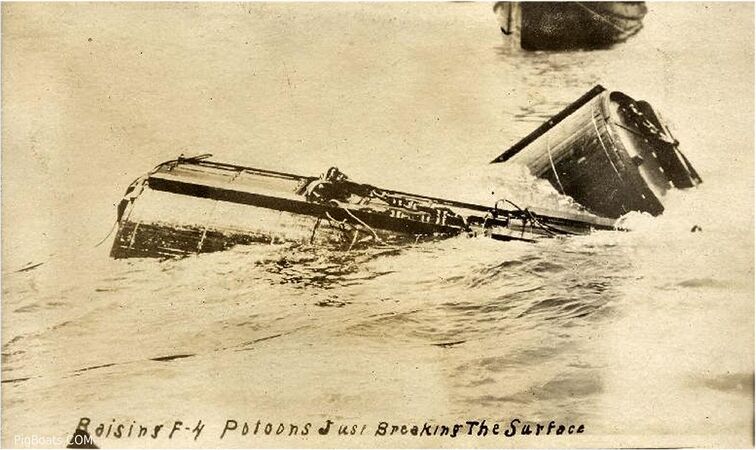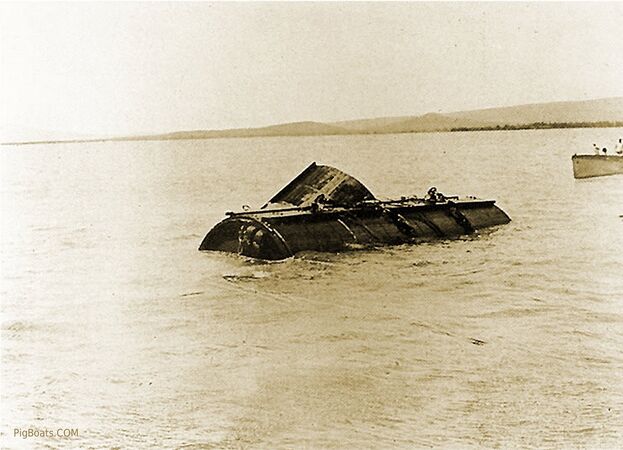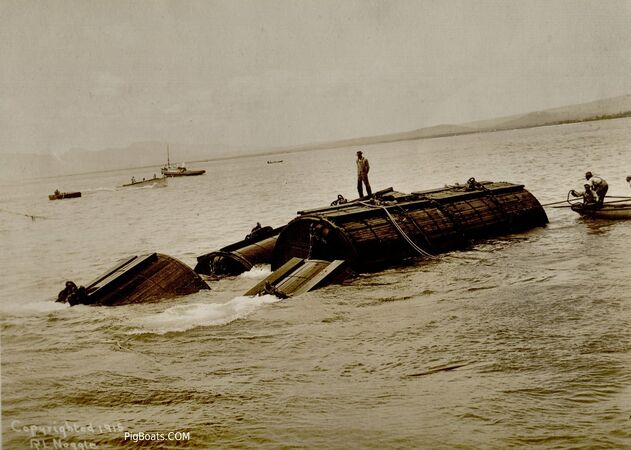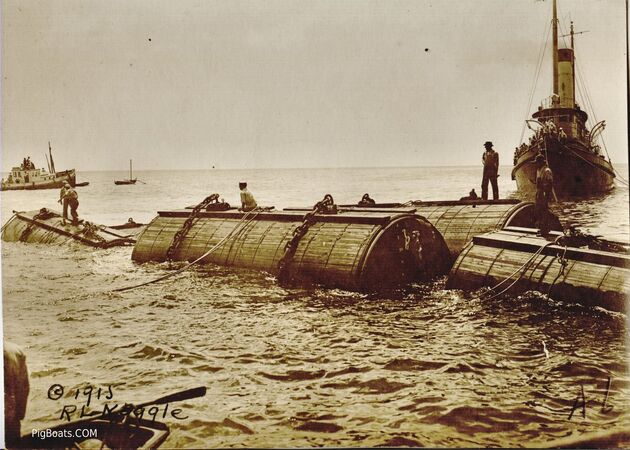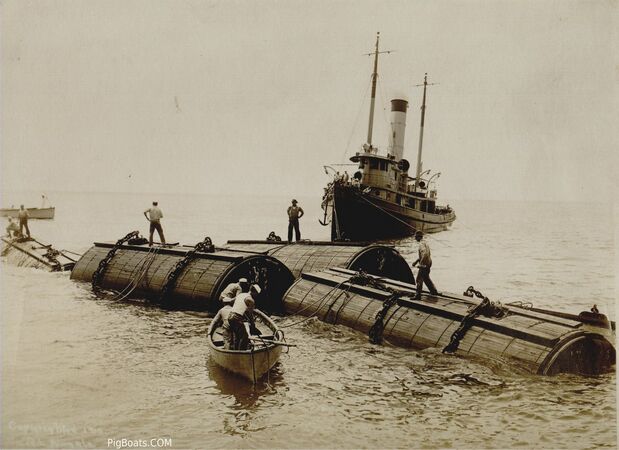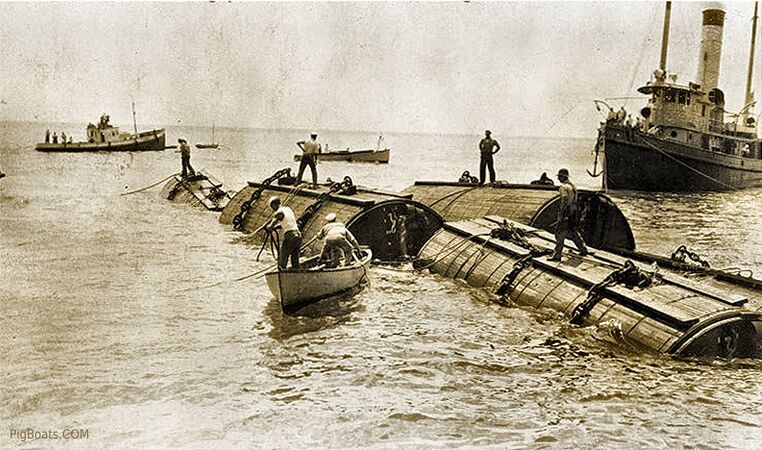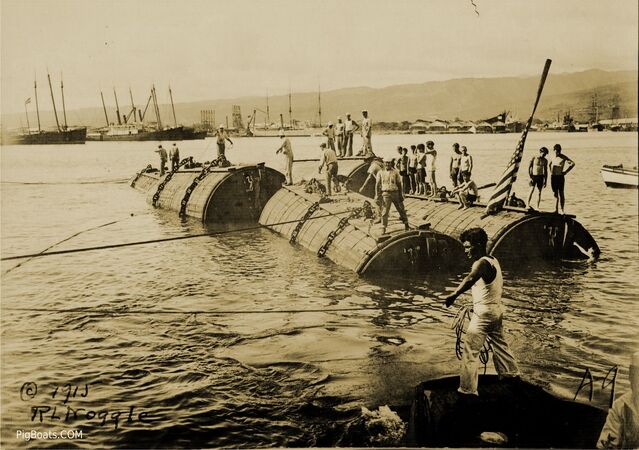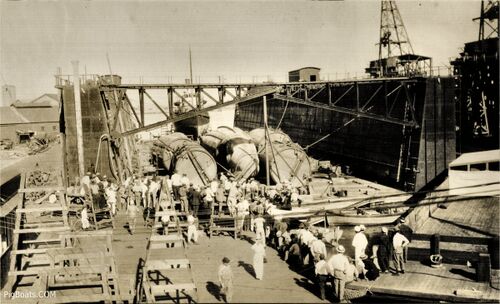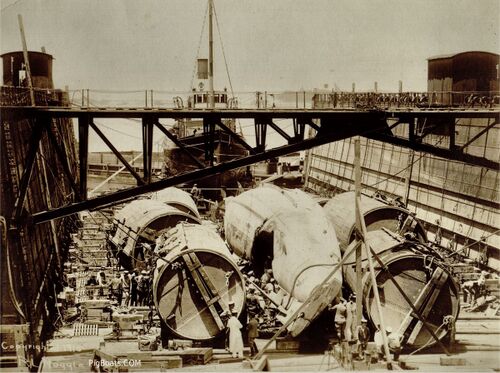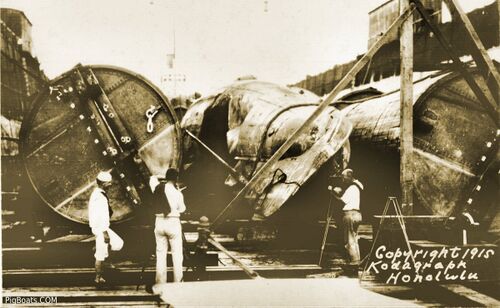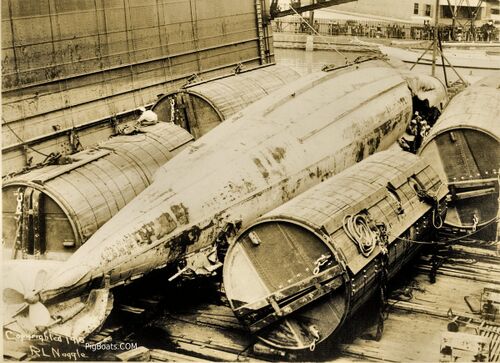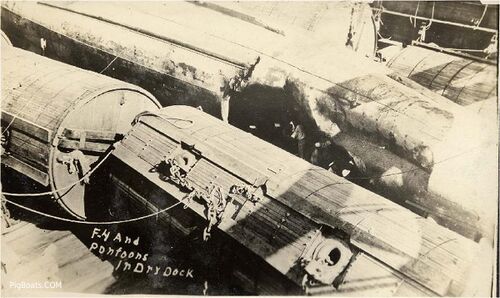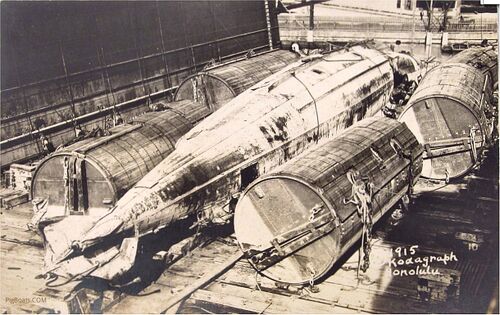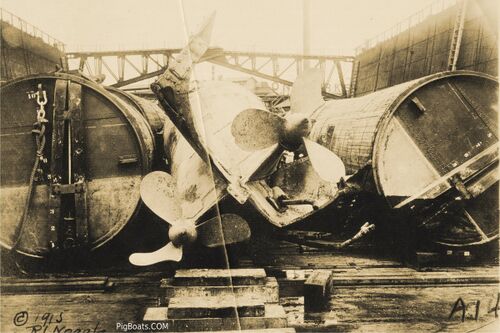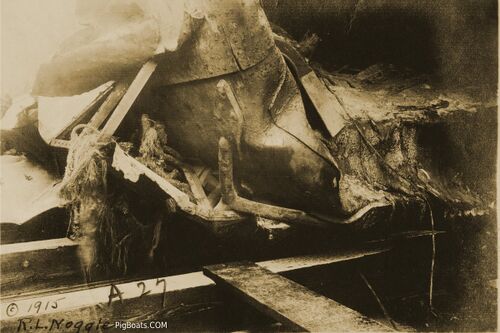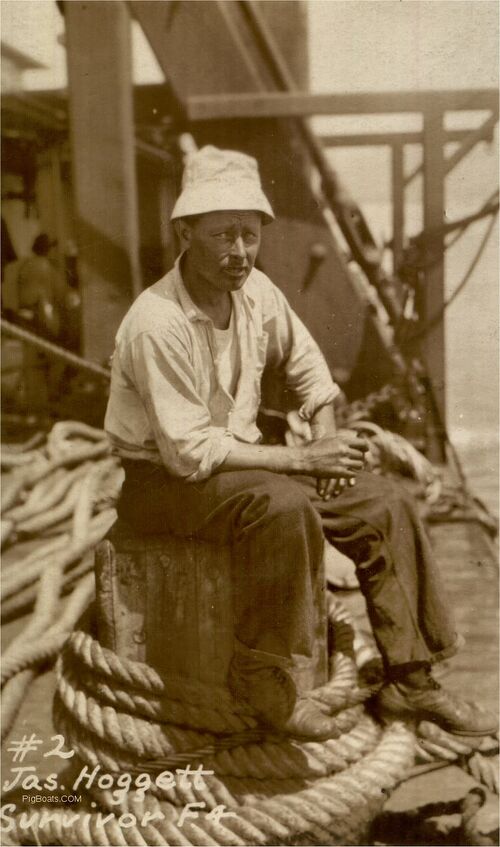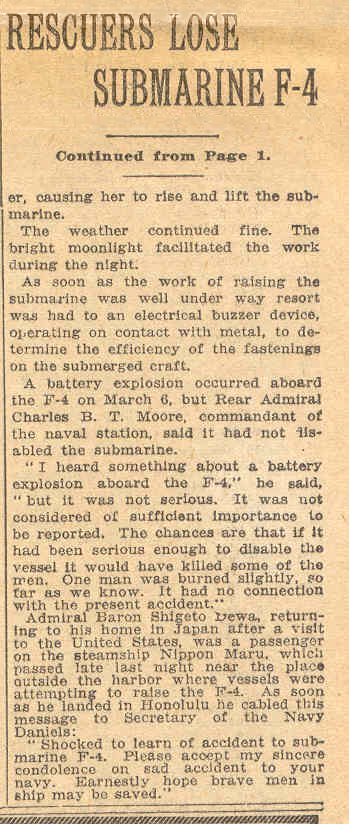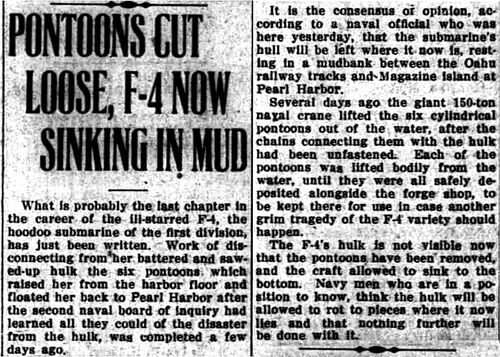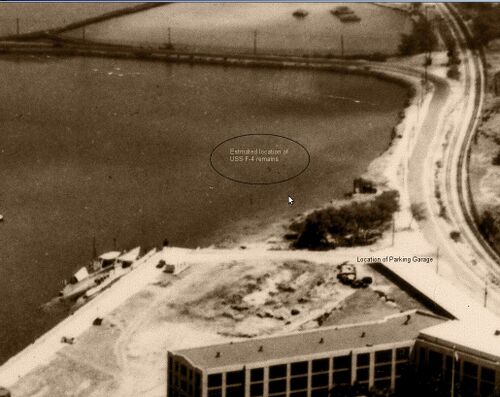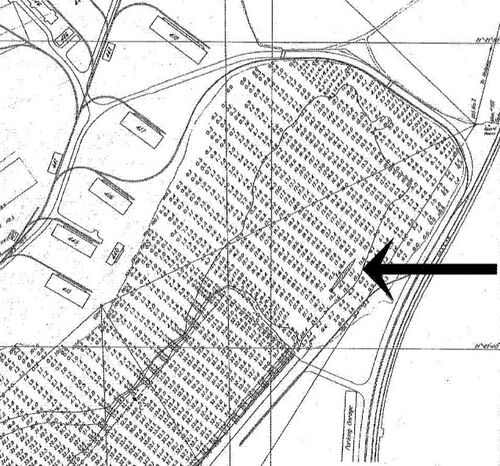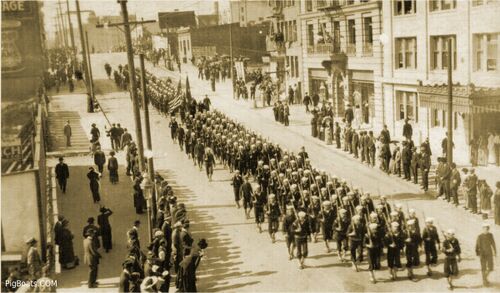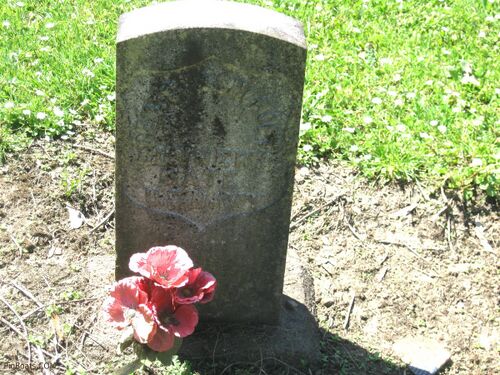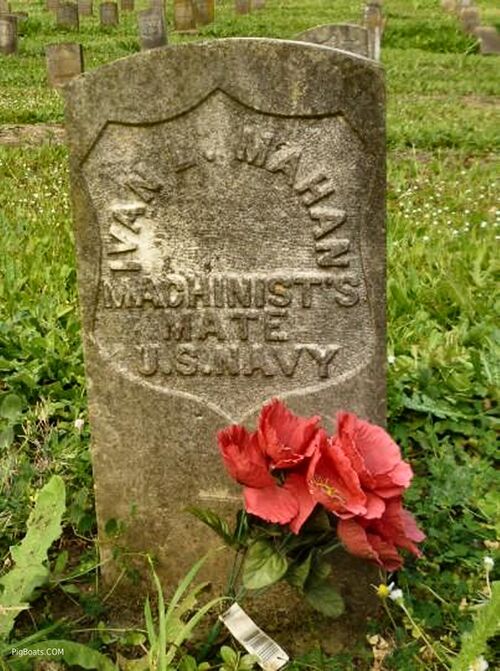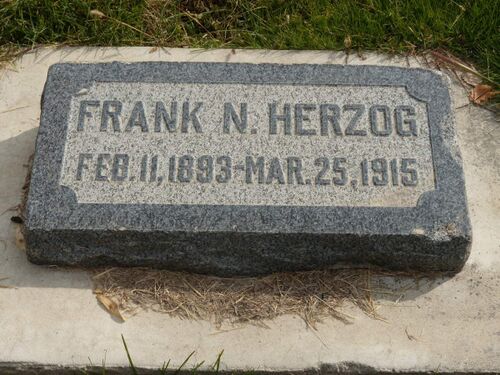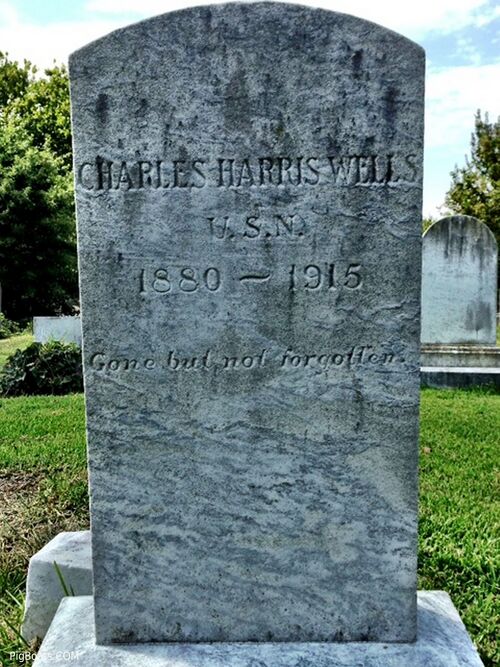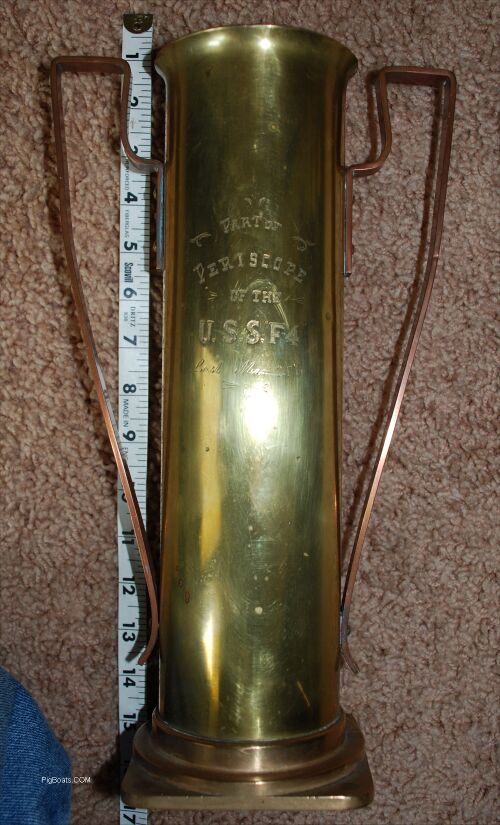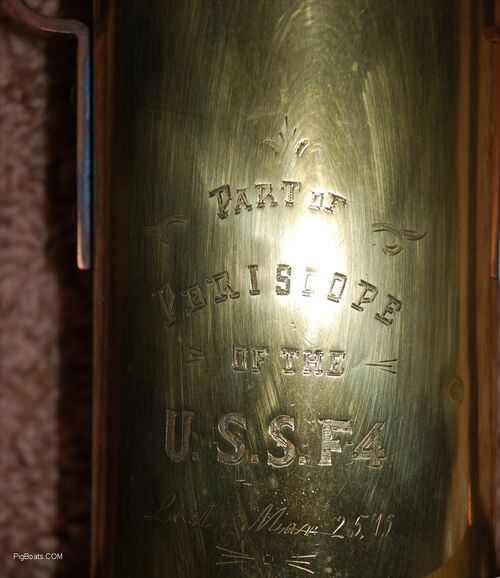F-4 salvage: Difference between revisions
Pbcjohnston (talk | contribs) Added captions |
Pbcjohnston (talk | contribs) Added captions |
||
| Line 82: | Line 82: | ||
[[File:F-4 salvage 11.jpg|left|500px]] | [[File:F-4 salvage 11.jpg|left|500px]] | ||
<div style="text-align: justify;"><span style="color:#00008B">Looking closely at this photo you can see the men at | <div style="text-align: justify;"><span style="color:#00008B">Looking closely at this photo you can see the men at work pumping air to a diver below. The men worked in crews of four for a short period of time before being relieved for a break. | ||
<small>Photo in the private collection of Ric Hedman.</small> | <small>Photo in the private collection of Ric Hedman.</small> | ||
| Line 121: | Line 121: | ||
</gallery> | </gallery> | ||
</center> | </center> | ||
<div style="text-align: justify;"><span style="color:#00008B"> | <div style="text-align: justify;"><span style="color:#00008B">Pontoons can be tricky beasts to work with, and this series of photos show the efforts made by the salvage force lifting the F-4 from the bottom. Cables suspended below these pontoons were slung under the F-4, and once the water was forced out of the pontoons with compressed air, they physically lifted the F-4 off the bottom. In several of the photos a man can be seen standing on a pontoon wearing overalls and a bowler hat. That is Master Rigger Fred Busse, a member of Furer's team, supervising the rigging process. Note that many of the pontoons are not floating level, and balancing them was a constant headache. In several of the pictures the USS Navajo (Fleet Tug No. 52) is seen standing by to assist.</span> | ||
<small>Photos in the private collection of Ric Hedman.</small> | |||
[[File:Red bar sub new.jpg]] | |||
[[File:F-4 salvage 14 pontoons 7.jpg|left|500px]] | |||
<div style="text-align: justify;"><span style="color:#00008B">The lifting and movement of the F-4 was done in several stages. The first lift brought her to about 250 feet. The whole assembly (F-4 and pontoons) was then towed towards Honolulu until the F-4 gently grounded in about 84 feet of water. The chains were readjusted, and she was towed again until she grounded at 50 feet. This photo shows her very near the harbor, probably at one of those intermediate stages. | |||
In the center background is the Navy floating cantilever pontoon crane YD-25. The crane had a lifting rating of 150 tons. Too little to have lifted the flooded F-4. She was destined to become a visual fixture at Pearl Harbor for the next dozen years. | |||
In the left background the USS Maryland is moored. She is the vessel that brought the six lifting pontoons to Hawaii. | |||
<small>Newspaper photo.</small> | |||
[[File:Red bar sub new.jpg]] | |||
[[File:F-4 salvage 14 pontoons 9.jpg|left|500px]] | |||
<div style="text-align: justify;"><span style="color:#00008B">In a photo taken just a few minutes after the one above, the riggers are shown readjusting the lifting chains to the shortest amount so that the F-4 could fully enter the harbor and placed in drydock. | |||
<small>Photo in the private collection of Ric Hedman.</small> | <small>Photo in the private collection of Ric Hedman.</small> | ||
| Line 127: | Line 145: | ||
[[File:Red bar sub new.jpg]] | [[File:Red bar sub new.jpg]] | ||
[[File:F-4 salvage 14 pontoons 8.jpg|left|500px]] | [[File:F-4 salvage 14 pontoons 8.jpg|left|500px]] | ||
<div style="text-align: justify;"><span style="color:#00008B">This is an artist's impression of what the F-4 looked like suspended below her lifting pontoons. The artist cleverly used the photo above as a start, then superimposed his own image below it. Yes, the F-4 was nearly upside down while it was being towed, as this was the position in which she hit the bottom after sinking. Unfortunately, the artist got the orientation wrong. She was actually laying on her port side, not the starboard side as shown here. | |||
<small>Photo from ''Beneath the Surface: WWI Submarines Built in Seattle and Vancouver'' by Bill LIghtfoot.</small> | |||
[[File:Red bar sub new.jpg]] | |||
<center> | |||
<gallery mode="packed" widths="400px" heights="300px"> | |||
File:F-4 salvage 14 pontoons 10.jpg | |||
File:F-4 salvage 14 pontoons 11.jpg | |||
</gallery> | |||
</center> | |||
<div style="text-align: justify;"><span style="color:#00008B">Two more views of the F-4 and her pontoons under tow, now very near the drydock inside Honolulu Harbor. The locally owned Young Brothers tugboat Makaala is seen on the far left. | |||
<small>Photos in the private collection of Ric Hedman.</small> | |||
[[File:Red bar sub new.jpg]] | [[File:Red bar sub new.jpg]] | ||
<div style="text-align: justify;"><span style="color:#000000"> | |||
=== <big>In Drydock</big> === | === <big>In Drydock</big> === | ||
</div> | |||
[[File:F-4 salvage dd 1.jpg|left|500px]] | [[File:F-4 salvage dd 1.jpg|left|500px]] | ||
[[File:F-4 salvage dd 2.jpg|left|500px]] | [[File:F-4 salvage dd 2.jpg|left|500px]] | ||
Revision as of 16:33, 8 September 2023
Search for the Lost Boat
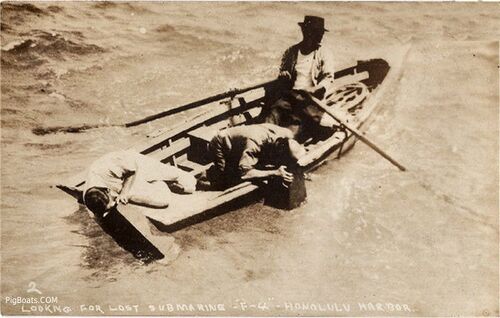
Here two men are using a box with a glass plate in the bottom that allowed a clearer view of things underwater.
Photo in the private collection of Ric Hedman.
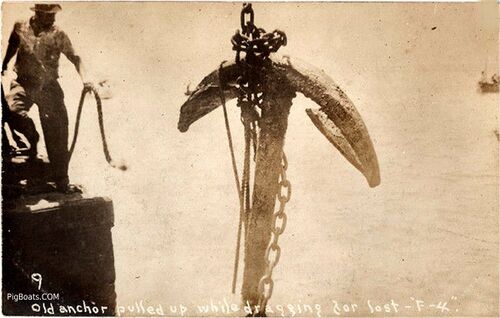
According to the Board of Investigation Report, when the weight of the anchor was discovered Jack Agraz, Chief Gunners Mate, a Navy diver from the USS F-1, donned his gear and followed the line to the target. Three crews of four men each manned the hand turned air pump suppling air to him. He discovered the grapple chain was wrapped around "an old anchor" at 215 feet. The F-4 had not been found.
Photo in the private collection of Ric Hedman.

Photo in the private collection of Ric Hedman.

Photo in the private collection of Ric Hedman.
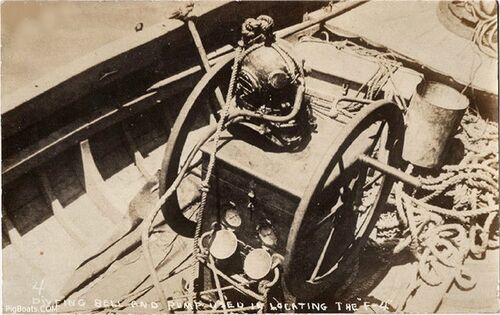
Photo in the private collection of Ric Hedman.
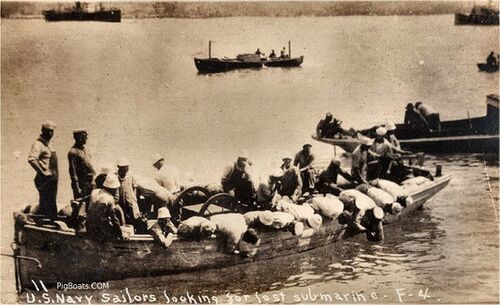
Photo in the private collection of Ric Hedman.

Photo in the private collection of Ric Hedman.
Salvage Work

Photo in the private collection of Ric Hedman.
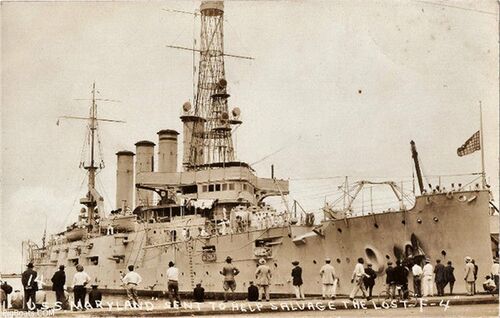
Photo in the private collection of Ric Hedman.

Photo in the private collection of Ric Hedman.
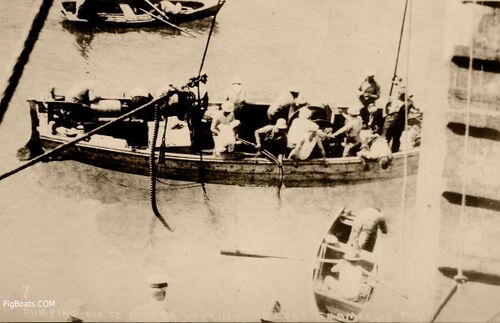
Photo in the private collection of Ric Hedman.
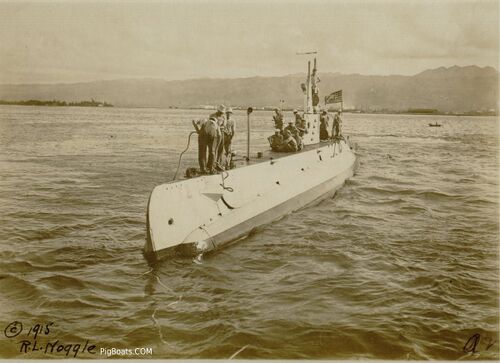
The rope that is being worked on by the men on deck can be seen floating in the water in front of the submarine. There is a similar one stretching from the after deck to what is assumed to be the salvage barge. The F-2 is probably in the process of mooring to that barge to supply the air needed for the pontoons.
Note the proximity to the shore. The F-4 sank just outside of the entrance to Honolulu Harbor, in Mamala Bay. With Oahu essentially being the top of an underwater mountain, the water depth drops off precipitously as soon as you leave the harbor.
Photo in the private collection of Ric Hedman.
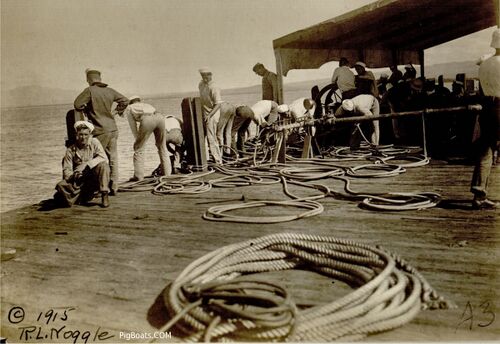
Photo in the private collection of Ric Hedman.
Raising the Boat with Pontoons
Photos in the private collection of Ric Hedman.

In the center background is the Navy floating cantilever pontoon crane YD-25. The crane had a lifting rating of 150 tons. Too little to have lifted the flooded F-4. She was destined to become a visual fixture at Pearl Harbor for the next dozen years.
In the left background the USS Maryland is moored. She is the vessel that brought the six lifting pontoons to Hawaii.
Newspaper photo.

Photo in the private collection of Ric Hedman.
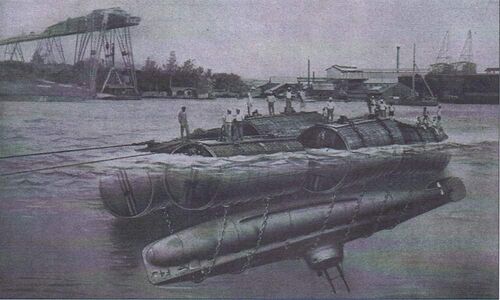
Photo from Beneath the Surface: WWI Submarines Built in Seattle and Vancouver by Bill LIghtfoot.

